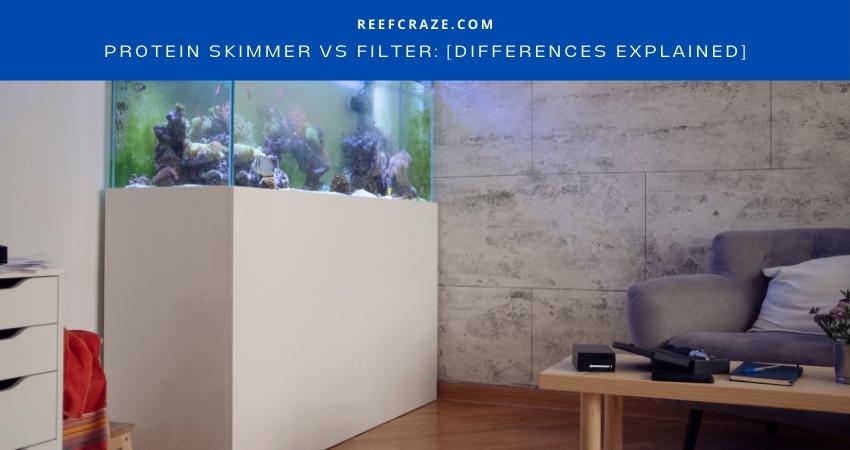Having a reef tank means you know the ABC of its maintenance, one of which includes the filtration system. It is of three types: mechanical, biological, and chemical. We will talk about the first one today. Mechanical filtration keeps your aquarium free of wastes and organic particles for your aquatic pets to stay healthy.
You have options to choose from about your mechanical filtration system. Some people get a protein skimmer, and others rely on filters. Both do a similar job with the same purpose.
One distinguishable difference between a protein skimmer and a filter is that a skimmer eliminates wastes before they split into deleterious toxins. That gives the skimmer an edge.
That should not necessarily take you to the conclusion that a protein skimmer is the better option. Or it alone is enough for your aquarium. You want to read through the article before you can reach a decision.
Protein Skimmers And Aquarium Filters: What Are They?
A protein skimmer is a piece of equipment for reef tanks that works to remove wastes from the water while oxygenating it. It is a mechanical filter to keep the water from being polluted by removing food particles before they divide into unhealthy toxins.

It is the same as a protein skimmer for other mechanical filters. They physically trap fish waste, uneaten food, and other plant materials while filtering and purifying the tank water.
How Does A Protein Skimmer Work
Every type of protein skimmer has a similar mechanism of creating a water/air interface where it makes a connection between air and water. Eventually, foam forms and gathers wastes and filters them from the water.
Then the filtered water gets back to the tank, and the waste foam sits in a receptacle. You are to clean and throw it away. You can also try automating the drill for your convenience. A lot of aquarists do that.
In essence, a skimmer creates air bubbles to separate the waste and keep the water unpolluted.
How Does An Aquarium Filter Work
A filter pushes the water by using a filter media as its strainer. It catches the free-floating organic materials that fail to pass through the media openings.
It can work with a piece of filter floss, a sponge, and a special filter pad as the media. It may produce air bubbles, too, like a protein skimmer. But that would be for saltwater only. How efficient the filtration will be depends a lot on the quality of the filter media.
Where To Put Them In The Reef Tank?
Protein Skimmer
There are internal, external, and hang on the back skimmers. The first one sits inside a tank or the sump. You will set the second one outside your tank to connect it with the inlet and outlet pumps. As for the HOB skimmers, you are to place them on your aquarium or open-topped sump’s side.
Filters
Internal and HOB filters go in the same place as the skimmers. Another is under-gravel filters, which use the substrate to suck in the tank water. Then bacteria develop on the gravel to break the wastes down, meaning the filter will stay at the tank’s bottom under its substrate.
If you get a canister filter, an increasingly popular mechanic filter, you will have to position them outside your tank using a pump to go from and to the tank.
Do I Need To Have A Filter While Running A Protein Skimmer Already?
You may not if you already have a full-functioning protein skimmer. However, it would be wise to think of alternative filtration systems depending on your aquarium needs.
Is There Any Case Where I might Need To Run Both In My Reef Tank?
A protein skimmer makes the filter’s job easier when combined. You will have an immaculate reef system with both running.
While it is not absolutely mandatory for you, you might consider using these two together if your tank has many inhabitants. Typically, if each square foot of the surface area has 3 inches for every fish, the environment will remain healthy. The more fish you add to your tank, the more you need another filtration system to provide backup.
Besides, you will need a filter anyway if your aquarium does not have live rock. Since they have filtration properties, your tank can do with a skimmer only. But if your tank has sensitive corals or fish, you have to think of using both tools at once.
Final Words
Since both tools are related to mechanical filtration, they are not mutually exclusive. Using either of them will provide your tank with a primary level of maintenance.
But it is best to use both in some cases, which is why you should analyze your tank needs and conditions before moving forward with its filtration system.
That is all from here. Thank you for reading!

